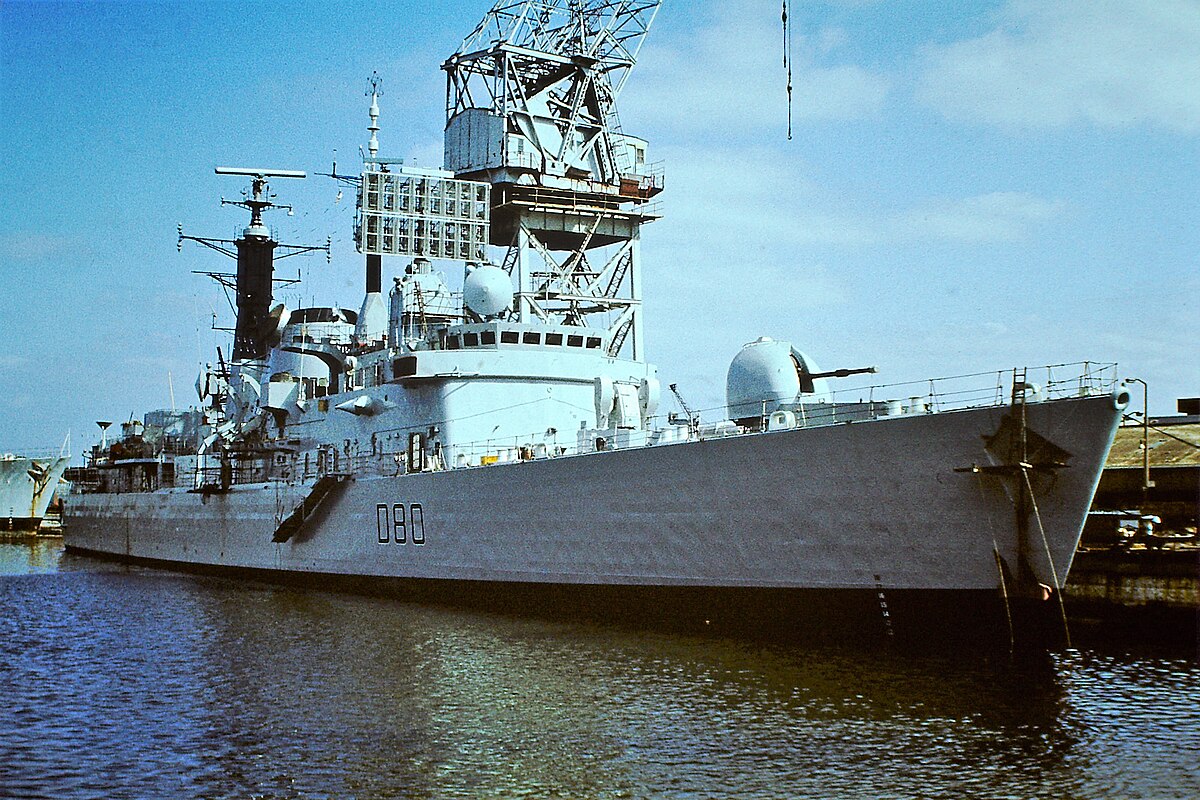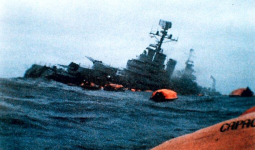You are using an out of date browser. It may not display this or other websites correctly.
You should upgrade or use an alternative browser.
You should upgrade or use an alternative browser.
New Canadian Shipbuilding Strategy
- Thread starter GAP
- Start date
- Reaction score
- 8,521
- Points
- 1,160
Eh Seigneur! Dis-moi pas ca!
- Reaction score
- 6,532
- Points
- 1,040
Short answer, no. But your company buys aren't subject to international trade agreements.Is there any mechanism for a similar process within current government practices?
We have some relational contracting things now, but basically it's still some kind of best value/lowest compliant bidder starting point to get into the initial contract.
Colin Parkinson
Army.ca Myth
- Reaction score
- 12,576
- Points
- 1,160
For me the AP1-400's are still "New", Christ I am feeling old now.......
Good news - work starting on the Polar icebreaker.

 www.seaspan.com
www.seaspan.com

Seaspan Shipyards completes ‘Prototype Block’ for Canadian Coast Guard’s future Polar Icebreaker - Seaspan
February 8, 2024 – North Vancouver, BC – Seaspan Shipyards (Seaspan) has successfully completed construction of the ‘Prototype Block’ for the Canadian Coast Guard’s (CCG) Polar Icebreaker program. Construction of this Prototype Block ensures that Seaspan has the proper processes, procedures...
Colin Parkinson
Army.ca Myth
- Reaction score
- 12,576
- Points
- 1,160
Check out the thickness they are working with.Good news - work starting on the Polar icebreaker.

Seaspan Shipyards completes ‘Prototype Block’ for Canadian Coast Guard’s future Polar Icebreaker - Seaspan
February 8, 2024 – North Vancouver, BC – Seaspan Shipyards (Seaspan) has successfully completed construction of the ‘Prototype Block’ for the Canadian Coast Guard’s (CCG) Polar Icebreaker program. Construction of this Prototype Block ensures that Seaspan has the proper processes, procedures...www.seaspan.com

daftandbarmy
Army.ca Dinosaur
- Reaction score
- 34,042
- Points
- 1,160
- Reaction score
- 2,380
- Points
- 1,160
Colin do these ships have inner/outer hull?Check out the thickness they are working with.
View attachment 83079
Colin Parkinson
Army.ca Myth
- Reaction score
- 12,576
- Points
- 1,160
No, I suspect fuel tanks may have a inner wall/not be part of the hull. We almost lost the Camsull when she was sliced open by a Growler in the 1980's. They were able to save her by building a cofferdam out of construction material she was carrying.
- Reaction score
- 6,532
- Points
- 1,040
Was talking to someone about this yesterday, and the tolerances for any distortions is really strict so the forming, welding etc is very particular. Pretty interesting if you've seen how complicated welding structural steel together is.Check out the thickness they are working with.
View attachment 83079
Colin Parkinson
Army.ca Myth
- Reaction score
- 12,576
- Points
- 1,160
Watching the various marine drone strikes on Russian ships, I have to wonder if WWII Cruiser thickness armour belts might be an effective defense against the ones that get through the active defense?Was talking to someone about this yesterday, and the tolerances for any distortions is really strict so the forming, welding etc is very particular. Pretty interesting if you've seen how complicated welding structural steel together is.
- Reaction score
- 6,532
- Points
- 1,040
Sort of, but then they would just switch to a different charge designed to punch through armour.Watching the various marine drone strikes on Russian ships, I have to wonder if WWII Cruiser thickness armour belts might be an effective defense against the ones that get through the active defense?
Even the heavy WW2 plate is pretty basic compared to modern tanks, so wouldn't be a tough nut to crack.
Not a nav arc, but believe it would have massive implications for the structural design, aside from the obvious weight add ons, and was generally shed because it's not effective against anti ship missiles and heavyweight torpedos, so not something that is easy to retrofit (especially as we've eaten up our weight margins anyway). Avoiding detection, soft/hard kill options and general compartmentalization/redundancy and other combatant recoverability considerations give you much better bang for your buck.
Things like the torpedo nets or the torpedo buffers they added on (can't remember the name of it, basically a void space like a really big double hull) helps by just pushing the blast farther off and letting it dissipate.
Lot of brainstorming internally with NATO but likely none of it will be open source.
Colin Parkinson
Army.ca Myth
- Reaction score
- 12,576
- Points
- 1,160
Torpedo blisters. I think if your going to have to fight in waters where these weapons will be common, you may need a purpose built ship for the fight. The good thing about the armour is that the weight is at the waterline which helps reduce it's effect. This is what 1" armour was able to stopSort of, but then they would just switch to a different charge designed to punch through armour.
Even the heavy WW2 plate is pretty basic compared to modern tanks, so wouldn't be a tough nut to crack.
Not a nav arc, but believe it would have massive implications for the structural design, aside from the obvious weight add ons, and was generally shed because it's not effective against anti ship missiles and heavyweight torpedos, so not something that is easy to retrofit (especially as we've eaten up our weight margins anyway). Avoiding detection, soft/hard kill options and general compartmentalization/redundancy and other combatant recoverability considerations give you much better bang for your buck.
Things like the torpedo nets or the torpedo buffers they added on (can't remember the name of it, basically a void space like a really big double hull) helps by just pushing the blast farther off and letting it dissipate.
Lot of brainstorming internally with NATO but likely none of it will be open source.

- Reaction score
- 6,532
- Points
- 1,040
Thanks, I couldn't remember what it was called.Torpedo blisters. I think if your going to have to fight in waters where these weapons will be common, you may need a purpose built ship for the fight. The good thing about the armour is that the weight is at the waterline which helps reduce it's effect. This is what 1" armour was able to stop

I think one big difference is previously torpedos hit the hull; now they blow up below you and the pressure bubble breaks your keel. Smarter people then me that specialize in that sort of thing just laugh at the idea of ships surviving a heavy weight torpedo shot, which is a typical sea training scenario for damage. Aside from breaking the ship, the blast wave would pulp everyone down below 3 deck, so don't really need to worrry about abandoning ship.
- Reaction score
- 18,054
- Points
- 1,010
Think legs telescoped into hips, from the shockwave…Thanks, I couldn't remember what it was called.
I think one big difference is previously torpedos hit the hull; now they blow up below you and the pressure bubble breaks your keel. Smarter people then me that specialize in that sort of thing just laugh at the idea of ships surviving a heavy weight torpedo shot, which is a typical sea training scenario for damage. Aside from breaking the ship, the blast wave would pulp everyone down below 3 deck, so don't really need to worrry about abandoning ship.
- Reaction score
- 6,532
- Points
- 1,040
Yeah, I don't think having your heels off the deck will cut it (although does make a big difference!). Even the shock trial at a portion of the blast strength hurt, and that's nothing compared to a HWT.Think legs telescoped into hips, from the shockwave…
- Reaction score
- 18,054
- Points
- 1,010
Nope. Not going to help. Just hope the blast kills you outright.Yeah, I don't think having your heels off the deck will cut it (although does make a big difference!). Even the shock trial at a portion of the blast strength hurt, and that's nothing compared to a HWT.
The WW2 novel “sharks and little fish” based on the actual war service of a Kreigsmarine veteran is instructive for what happens to people’s legs after a torpedo hit…
- Reaction score
- 6,532
- Points
- 1,040
That's the only plus side about being on 3 deck at action stations I guess; in a HWT scenario you are in the lethal blast zone so might get taken out right away vice being horribly mangled but surviving long enough to drown.Nope. Not going to help. Just hope the blast kills you outright.
The WW2 novel “sharks and little fish” based on the actual war service of a Kreigsmarine veteran is instructive for what happens to people’s legs after a torpedo hit…
Even folks on the bridge or in the hangar are likely toast.
Quality of the video is pretty poor, but I think instructive. It would have been more dramatic if there was fuel and ammo on board as well.
- Reaction score
- 29,138
- Points
- 1,090
Similar threads
- Replies
- 2
- Views
- 8K
- Replies
- 0
- Views
- 9K
- Replies
- 558
- Views
- 225K
- Article
- Replies
- 121
- Views
- 144K






